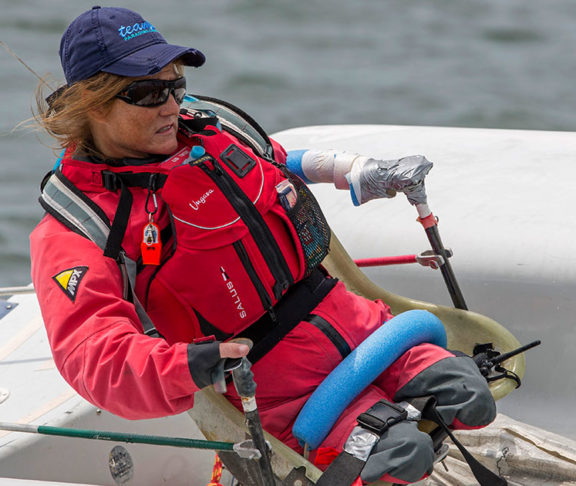
Tracy Schmitt
Canadian Disability Hall of Famer
Mediaplanet caught up with “Unstoppable Tracy,” Canadian Disability Hall of Famer, on promoting inclusiveness in the workplace.

How has your sports career shaped your perspective on inclusion and empowerment?
I’ve had hundreds of job interviews, and it came to the point where they’d consistently say, “You’re fantastic; a ton of people will hire you.” Well, how come not you? With each person turning me down, they didn’t bother to ask what I could or couldn’t do. They assumed I couldn’t do the job based on my appearance. The breaking point that always pivoted almost every job interview that got me hired was when the interview conversation steered toward the recreational.
So at my first job, there were skis in the corner of his office. When I finished the interview and saw the skis, that’s when we went into conversation. And then, when he hired me, he said, “Yeah, well, I figured if you could ski downhill, you could answer the telephone, right?” So recreation and high-performance sports have given me credibility during job interviews. And when I had that light bulb moment, it certainly became part of how I would engage people. Participating in high-performance sports gave me credibility in a way that not being a high-performance athlete before did.

When facing obstacles, what has helped motivate you to push through, or in other words, be unstoppable?
On my first day of school, my mom and I were face to face with the principal, and he took one look at me and said, “I’m sorry, Tracy can’t go to this school.” There weren’t support workers for children with disabilities at schools then. So he saw me without hands and legs. There was only one teacher and 30 kids, so he wasn’t even being a bad guy. There just wasn’t anybody to support a student with no hands and no legs. So, my mom said, “I understand. Can we just try for a week since we’re here today while I find some of those other schools you’re talking about?” And so he agreed, and my mom just looked at me, saying, “Tracy, it’s really important that you and everybody’s included. Nobody left behind.”
Fast forward to recess time, and I’m not there. I never made it outside. So the principal went inside to ask my teacher, “What happened? She couldn’t tie her shoelaces?” And my teacher was confused. And she says, “Tracy was the first one to tie her shoelaces.” And he’s like, “Well, then how come she wasn’t outside?” And she said, “Her little friend couldn’t tie her shoelaces.” It turned out none of the 30 kids could tie their shoelaces. By the time I tied 30 shoelaces, the recess bell had gone off. I learned that day that when the principal said no, it just meant he didn’t “know.”

What do you believe can be done to further promote inclusive and accessible communities?
A great way to promote is by ensuring visibility and in authentic roles. So, for example, people might bring me in for their accessibility conference as their keynote speaker. How about bringing me in for your leadership development? I’m an adult woman with an MBA, so overqualified for the entry-level and they don’t imagine me in those senior positions. So, get people in the door, and if you don’t have employment, make an effort to contract people with disabilities.
The untapped market potential is to include people with a disability declared or people who have something different going on and, as a result, are unstoppable about being creative problem solvers and ensuring no one’s left behind. And that includes your finances, creative marketing, heartfelt leadership, and genuine, authentic souls that people are looking for in these susceptible post-COVID-19 times.


